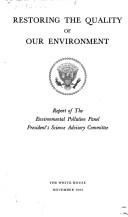Some selected source material and references from Wednesday night’s TED Salon:
David Keith (pictured, left) showed a New York Times editorial on the coming climate change — from May 24, 1953:
How Industry May Change Climate
The amount of carbon dioxide in the air will double by the year 2080 and raise the temperature an average of at least 4 per cent. The burning of about two billion tons of coal and oil a year keeps the average ground temperature somewhat higher than it would otherwise be. …
Within the NYTimes archive, we found a related story from 1953:
The Weather Is Really Changing
Studies confirm that feeling you’ve had that summers are getting warmer. So are our winters. But atmosphere, not atoms, is to blame.
A few other historical sources Keith referred to:
+ Changing Climate, by the Carbon Dioxide Assessment Committee, U.S. National Research Council, 1983
+ Restoring the Quality of Our Environment, Report of the Environmental Pollution Panel, President’s Science Advisory Committee, The White House, December 1965
Martin Hoffert discussed the Kardashev scale — a ranking of civilizations based on the kinds of energy they use. Earth is still at the bottom of this scale — we’re just using whatever we find lying around on the planet. More advanced civilizations in the universe, Kardashev theorizes, will begin to harvest and grow power using all the resources of their star system and of the universe. Hoffert shows us one step toward star power: solar energy via satellite.
Juan Enriquez talked about two scientists whose work could point the way to a new future of energy. As an inspiration, he points to Norman Borlaug, called “the Father of the Green Revolution.” Borlaug developed optimized strains of wheat that, quite literally, now feed the world. He brought a biological, a scientific approach to agriculture that allowed it to leap beyond the boundaries of traditional “brute force” farming — to become efficient, dependable and more productive by orders of magnitude. Enriquez’ next scientist-hero is Hamilton Smith, who shared the 1978 Nobel Prize in Medicine for his work in manipulating DNA. Is Smith, or someone like him, the person who will help energy make the great leap forward that farming has?
Photo of David Keith by Myrna Suarez, Condé Nast Portfolio
